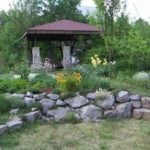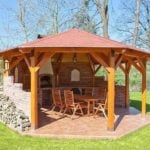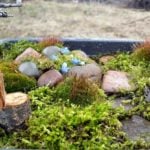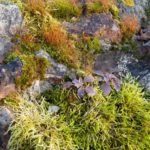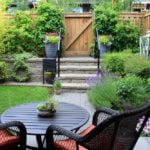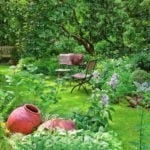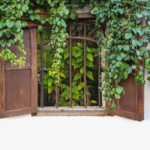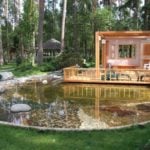It is not difficult to create a place where people and nature can get along peacefully. It is enough to make just a few changes to make the garden eco-friendly and attract useful helpers — pollinating insects and birds.
1. Bet on a variety of
Flower beds, where the maximum number of different plants grows, will attract more pollinators to the garden, without which it will not be possible to collect a good harvest in the garden.
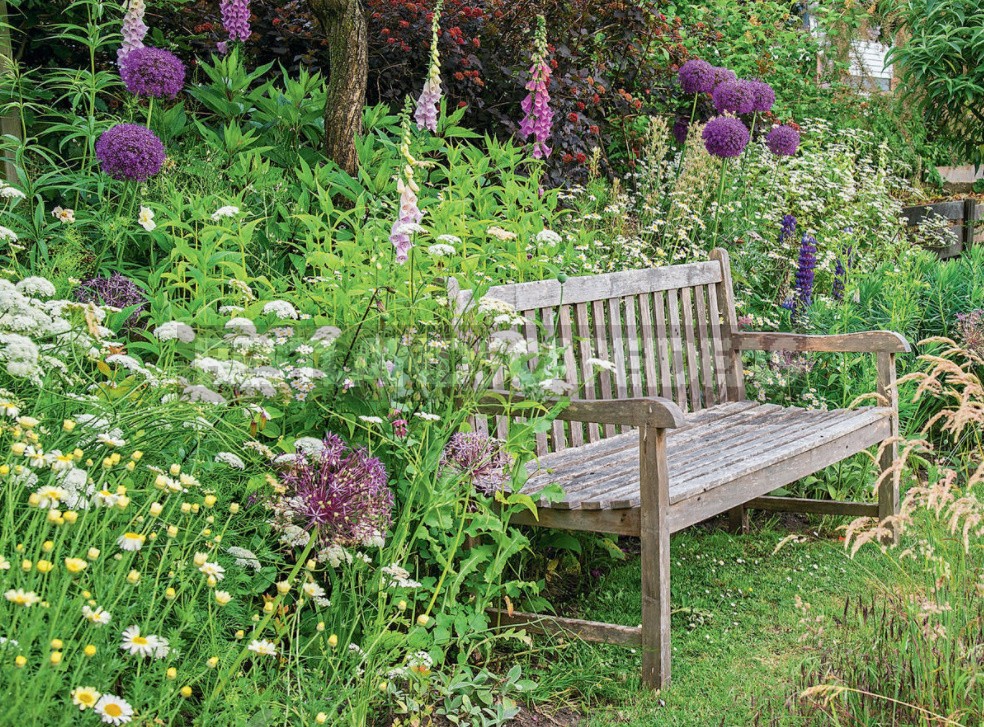
Also, green pets of insects will not hurt to diversify the garden bed. For example, foxglove is adored by bumblebees. A special arrangement of tiny assistants is also used by the chamomile-nivyanik with a decorative bow.
2. Multi-level reservoir
The larger and more diverse the vegetation in the coastal zone, the more living creatures are able to settle here, turning an artificial element of decoration into a full-fledged natural ecosystem.
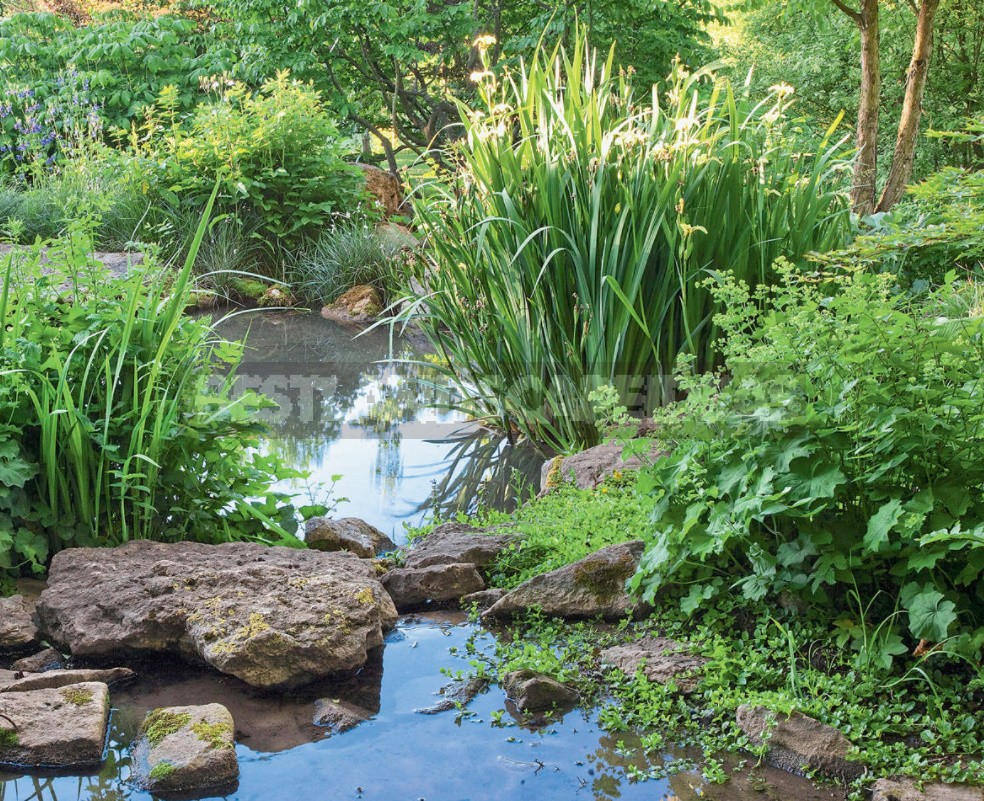
And to do this, the pond should be made heterogeneous in depth and filled with appropriate plants.
Important: in the eco-garden, however, you should refuse to settle fish.
Tip: it is advisable to make the coastal zone flat, so that animals, such as hedgehogs, if they fall into the water, can get out of it.
3. Solid foundation without concrete
Paths and recreation areas are often paved with paving stones and fill the seams with cement-sand mortar. This makes it easier to care for the site, since weeds do not grow in the “clogged” joints. However, it is more environmentally friendly to use slabs or flat stones laid on a pillow of sand or crushed stone for paving.
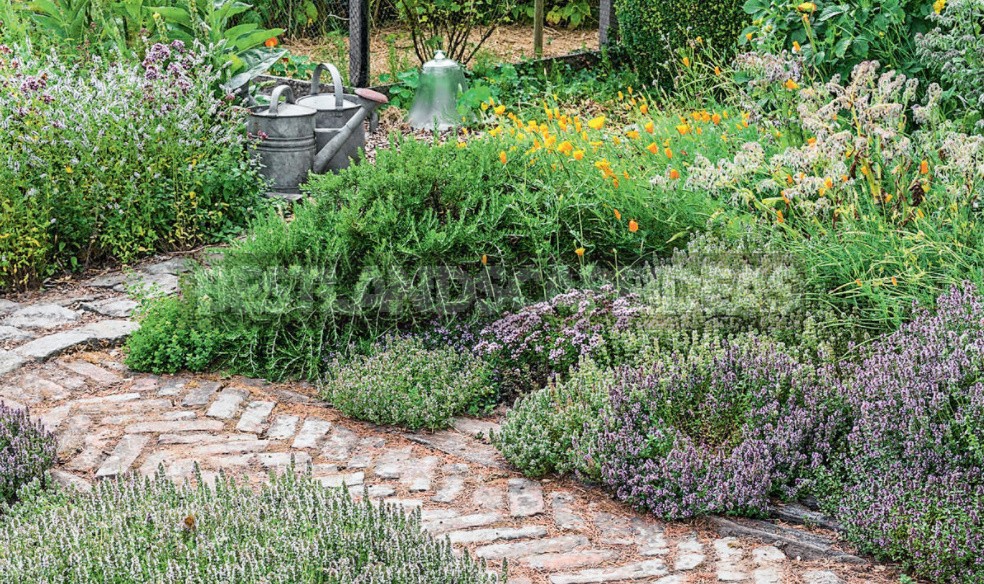
Such a base allows water and air to pass through and does not interfere with the microorganisms living in the soil. Even if weeds do appear, they are isolated instances. They are easy enough to pull out while they are small. Alternatively, the seams can be planted with groundcover herbaceous perennials.
4. Bird bait
Feathered friends help us get rid of pests by eating adults and their larvae. Therefore, the birds in the garden are always welcome guests. And since they, like any living creature, are thirsty and like to swim, put a couple of drinkers on the site.
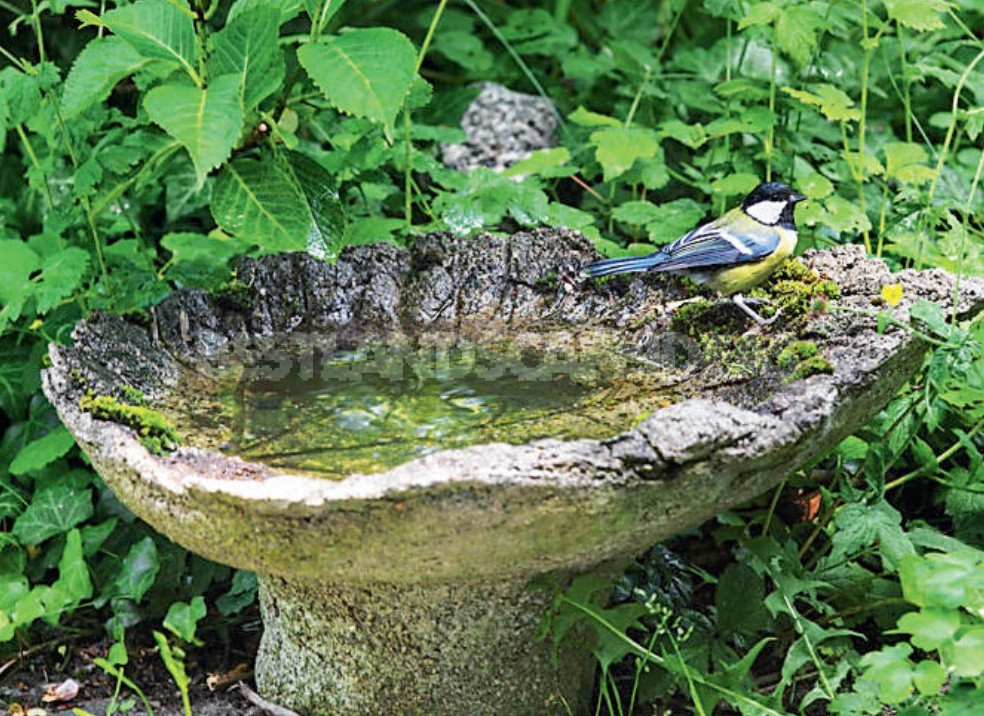
It does not hurt to hang a few nests.
5. Lawn in the middle of the lawn
A beautiful, well-kept lawn requires relentless care. At the same time, it is often necessary to use chemical preparations to get rid of weeds, pests and diseases. For the sake of ecology, it is better to abandon such funds altogether.
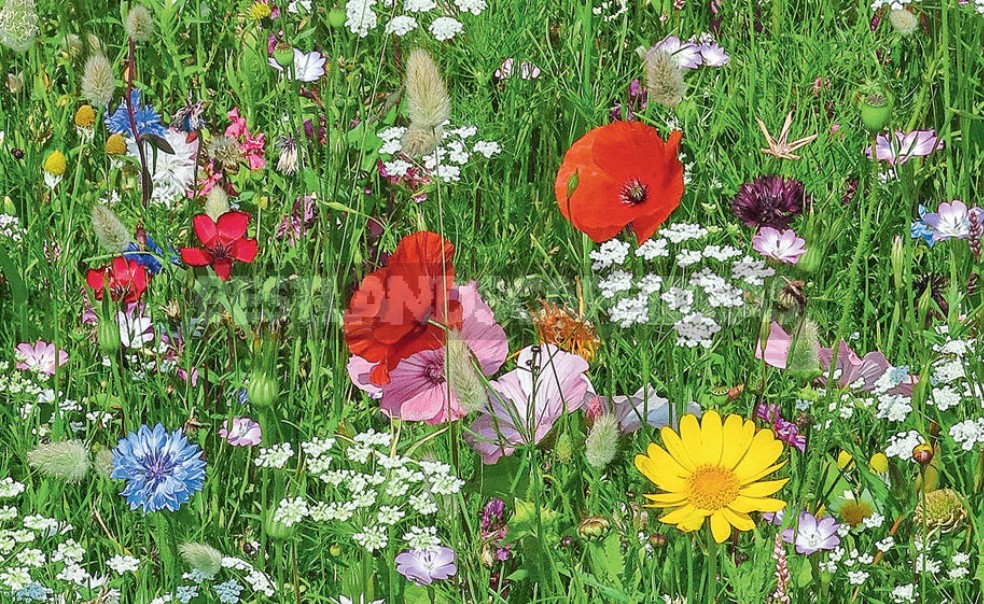
In addition, the composition of lawn grass includes not so many plant species. Since the eco-garden welcomes floral diversity, we suggest that you turn part of the usual green lawn into a Moorish one, which consists of cereals and wildflowers.
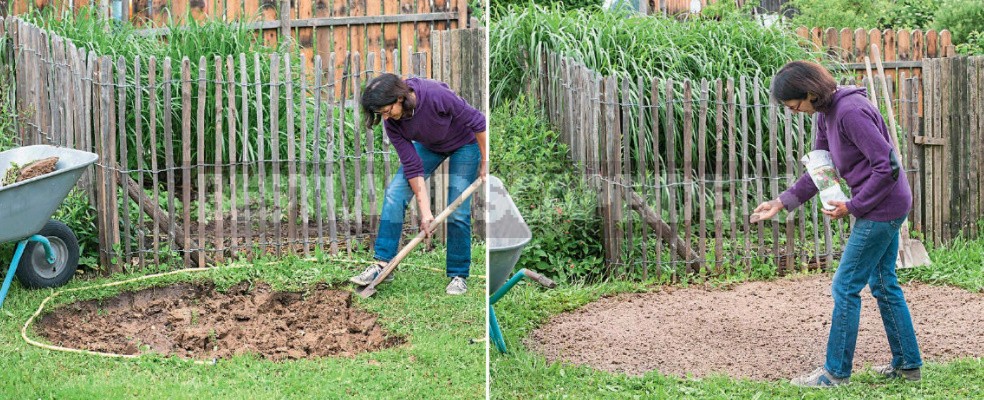
To do this:
- At the site of the future clearing, remove the turf and loosen the soil.
- Spread the seeds evenly on the surface, seal them with a rake and tamp them, for example, with a board.
- At first, make sure that the soil is constantly moist.
- Do not apply fertilizers!
6. Bet on simplicity
Roses with large double flowers look luxurious, but they are useless for pollinating insects, because they do not contain pollen and nectar. Rosehips and plants with simple flowers (in the photo below-varieties of ‘Scharlachglut’), on the contrary, abound in “dessert” for insects. The same applies to herbaceous annuals and perennials. Among them, it is also desirable to choose plants with non-double flowers.
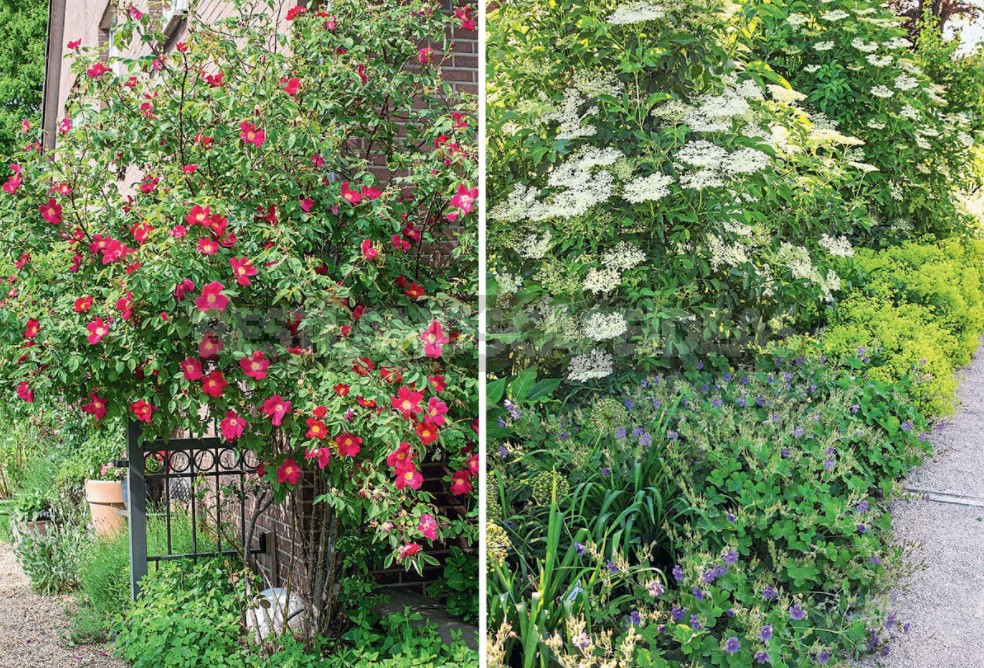
7. Bet on “savages”
Local trees and shrubs, such as elderberry (pictured above) or mountain ash, have many advantages. They are hardy and unpretentious, which means that you will not need to use chemicals to care for them. In addition, their flowers and fruits serve as a source of food for many animals. If you create a hedge from such plants, birds will be able to build nests there and other small animals will settle.
8. We green the walls, creating a balance of beauty and utility
Green outfit for facade, wall of shed or garage positive effect on the microclimate of the area, as owing to the evaporation of water from the leaves, the air temperature lowered, with the result that it becomes saturated with water – perfect effect during the hot summer days.
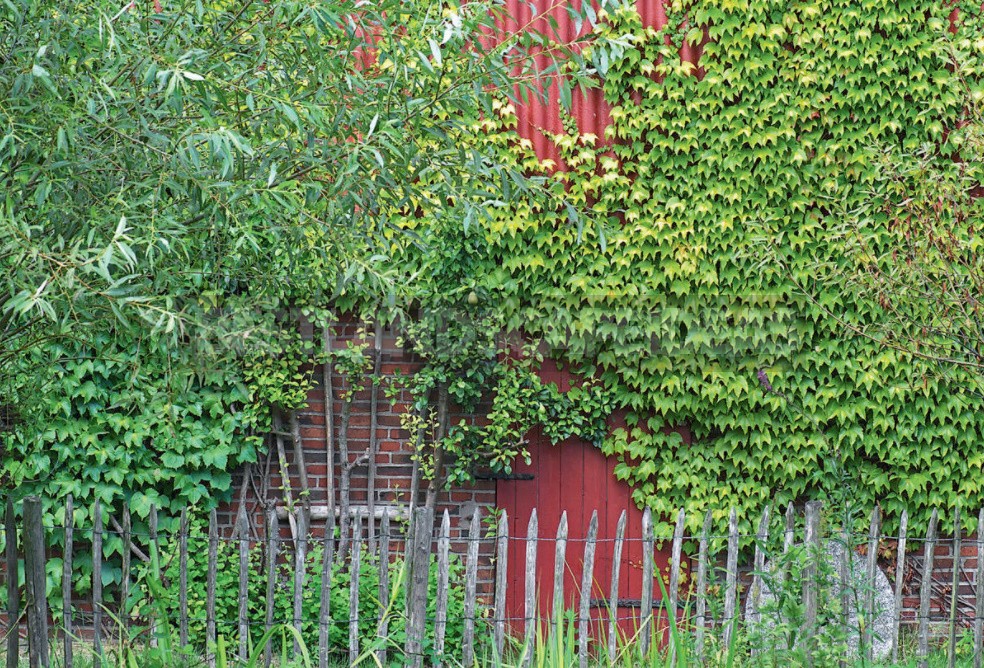
In addition, a dense canopy of green maiden grapes (pictured) or mountaineer may well become a home for birds and insects. And, for example, the ivy inflorescences that appear in August will attract bees to your property.
9. Always mulch the beds
In the eco-garden, it is undesirable to leave the land without vegetation, because the “bare” soil quickly dries up in drought or silts up during rain. In addition, the absence of plants has a bad effect on living organisms living in the soil. In flower beds, the soil is best helped to cover fast-growing groundcover perennials, on the bed, the row spacing and paths should be mulched.
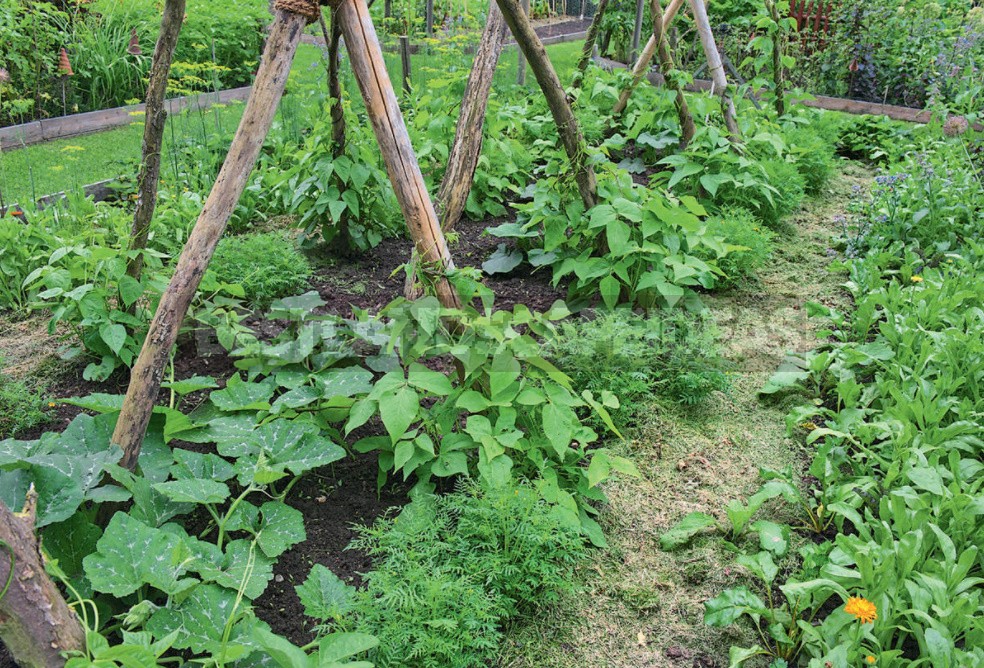
To do this, you can use dried mown grass (pictured) or cabbage or rhubarb leaves.
The best way to prepare organic mulch is to chop the mown grass and branches left after pruning.
10. Fertilizer from waste
Organic materials, such as mown grass or fallen leaves, are too useful to just throw away. Send them to the compost pile, where earthworms and all sorts of microorganisms will turn everything into a valuable organic fertilizer, which also improves the structure of the soil.
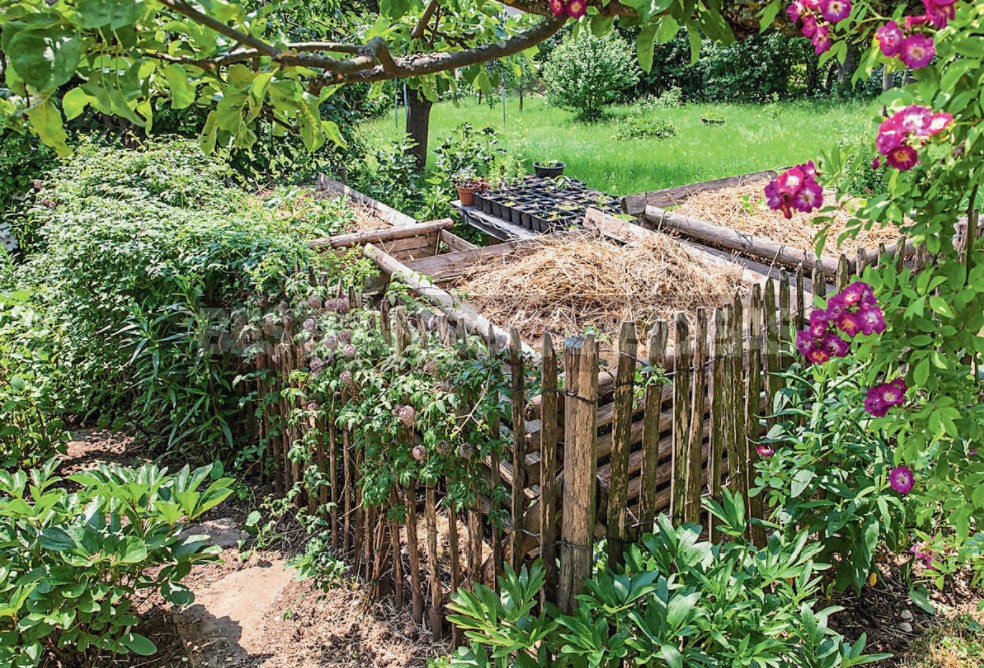
As a result, you will need to buy significantly less fertilizers to feed the plants, because you will always have your own – and at the same time free of charge.
11. Biological protection
If you have a vegetable garden, it should bring a good harvest. Nature itself will help if vegetable plants are combined with some decorative ones.
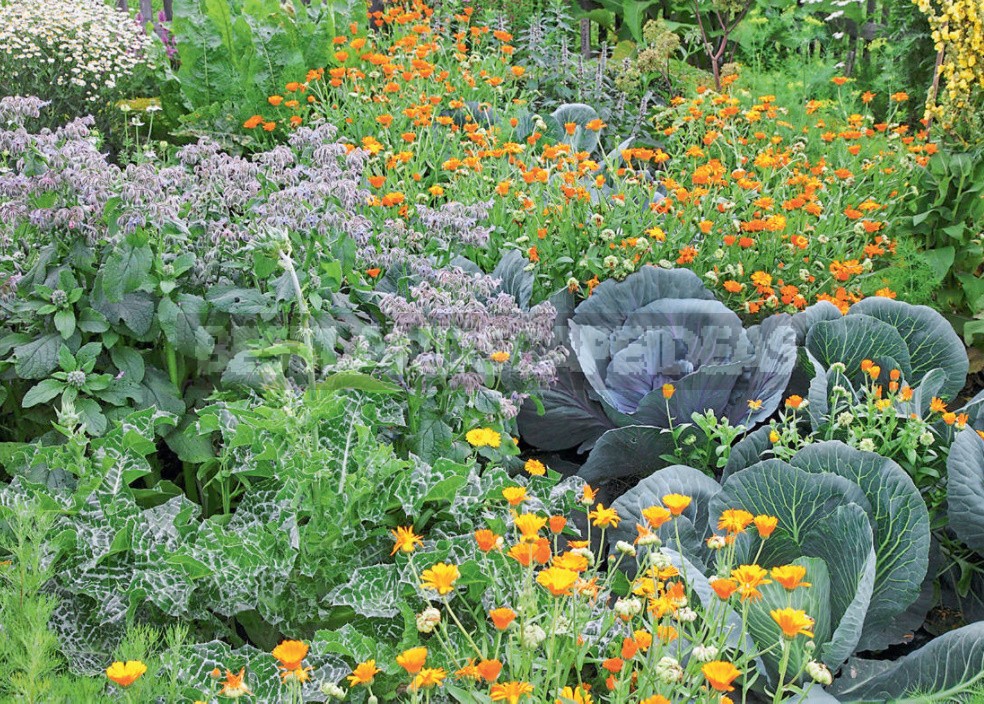
So, calendula heals the soil, because its secretions kill harmful nematodes that feed on the roots of useful representatives of the flora. And the flowers of cucumber grass, in turn, attract pollinating insects and thus contribute to the setting of fruits.


